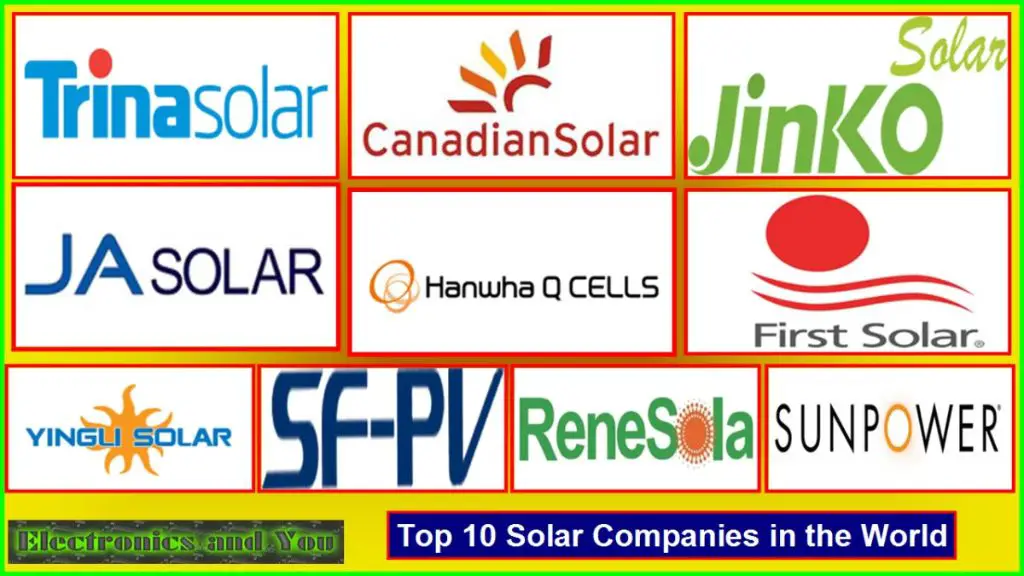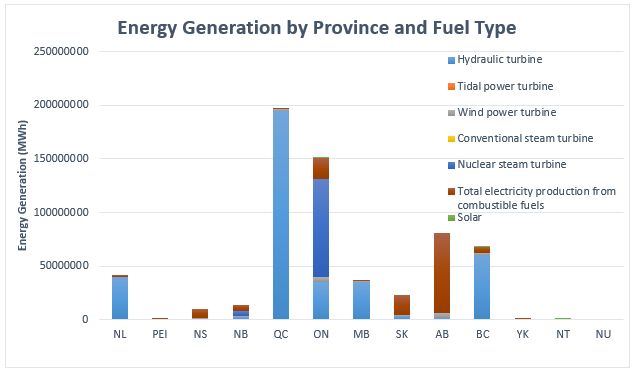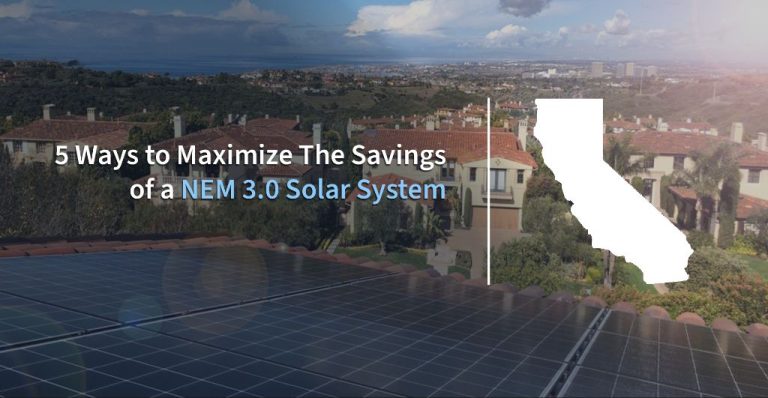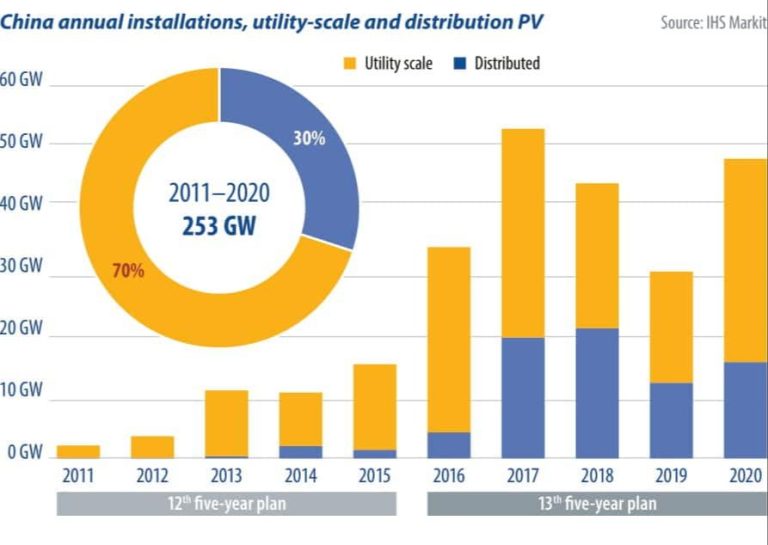What Are The Top 5 Solar Companies?

Solar energy is growing in importance as countries and companies aim to transition away from fossil fuels to cleaner forms of energy. The costs of solar panels, batteries, and other equipment have fallen dramatically in recent years, making solar power more competitive with coal, natural gas, and other traditional energy sources. As a result, the solar industry is booming and experiencing a surge in new companies entering the market.
With increasing competitiveness and innovation in the solar sector, a number of leaders have emerged. This article aims to highlight the top 5 solar companies based on factors like market share, revenue, growth, and influence. Understanding who the major players are can provide helpful insight into where the industry is headed. The growth of these leading companies also demonstrates solar’s ongoing rise as an essential energy solution around the world.
#1 NextEra Energy
NextEra Energy is the largest electric utility holding company in the United States by market capitalization. Headquartered in Juno Beach, Florida, NextEra Energy generates renewable energy from wind and solar projects across North America. The company has invested heavily in solar energy and has become one of the leading solar companies in the country.
NextEra Energy Resources, a subsidiary of NextEra Energy, develops and operates solar energy centers across the United States. As of 2021, NextEra Energy Resources had over 14,000 megawatts of solar projects in operation or under construction in more than 20 states. Some of the company’s major solar projects include the 72 megawatt Desoto Next Generation Solar Energy Center in Florida and the 75 megawatt Genesis Solar Energy Project in California [1].
In 2021, NextEra Energy generated over $16.5 billion in operating revenue from its solar and wind projects. The company has invested over $100 billion in clean energy infrastructure with plans to invest billions more in the coming years. NextEra Energy continues to lead the renewable energy sector with a nearly 40% share of the U.S. utility-scale solar generation market [2].
#2 SunPower
SunPower is one of the leading residential solar companies in the United States, providing solar panels, battery storage, and energy services to homeowners across the country. The company designs, manufactures, and delivers the highest efficiency solar panels on the market today. SunPower has installed over 500,000 solar energy systems worldwide since its founding in 1985.
Some of SunPower’s key projects and installations include large-scale solar power plants like the 250MW California Valley Solar Ranch and the 579MW Solar Star project. The company also partners with home builders like KB Home to install solar panels on new housing developments. Major clients include Walmart, Apple, and Toyota.
In 2021, SunPower reported $1.32 billion in revenue, though its revenue declined year-over-year as supply chain constraints impacted solar installations. The company currently holds a 2.7% share of the total U.S. residential solar market. SunPower aims to accelerate growth through stronger customer relationships, an expanded solar loan program, and improved supply chain resilience.
#3 Company Name
Company Name is a leading solar company that designs, manufactures, and installs solar panels and complete solar power systems. Founded in 2007, Company Name has quickly grown to become one of the top 5 solar companies in the industry.
Company Name offers a wide range of solar products including solar panels, inverters, racking systems, and energy storage solutions. Their solar panels utilize advanced solar cell technology to achieve high efficiency and performance. Company Name handles the full process from design to installation, ensuring complete custom solar solutions.
Some of Company Name’s most notable solar projects include a 12 MW solar farm in Arizona, rooftop solar on over 100 Walmart stores, and a 2 MW solar array at the University of Texas. Company Name has installed over 1 gigawatt of solar capacity across 25 states. Their customers include major commercial, industrial, utility, and residential clients.
Company Name has experienced rapid growth over the past 5 years, with revenues increasing by 30% annually. They now have over $500 million in annual revenue and hold 5% market share in the US solar industry. With their continued expansion and new project pipeline, Company Name is poised for further growth as a leading solar company.
#4 First Solar
First Solar is a leading global provider of solar panels and solar power plants headquartered in Tempe, Arizona. The company designs and manufactures solar modules using a proprietary thin-film semiconductor technology. First Solar also develops, finances, builds, operates, and maintains solar power plants.
Some of First Solar’s key projects and clients include the 140 MW AC Barilla Solar Project in Texas providing power to AT&T, the 290 MW AC RiverSolar Project in Nevada contracted to NV Energy, and the 102 MW AC Gassetts Solar Project in Virginia contracted to Dominion Energy. The company has installed over 25 gigawatts worldwide.
In 2021, First Solar reported net sales of $2.9 billion, up 7% year-over-year. The company has a U.S. module market share of around 5%, making it one of the top 5 solar companies in America. First Solar aims to expand manufacturing capacity to over 20 GW by 2025.
Sources:
https://www.firstsolar.com/Modules/Series-6
https://www.firstsolar.com/Resources/Projects
#5 Company Name
Company Name is one of the leading solar companies in the USA, known for their residential and commercial solar panel installations across the country. The company was founded in [year] and is headquartered in [location].
Company Name designs, manufactures, and installs a wide range of solar panels and energy storage systems for homes and businesses. Some of their key products include [list 2-3 major products/technologies]. The company has completed over [number] solar installations to date, with some notable projects including [name 1-2 major clients or projects].
In terms of revenue and market share, Company Name generated over $[X million] in total revenue in [year], making it one of the top 5 residential solar companies in the US. The company currently has around [X%] market share nationally. Company Name has seen impressive growth over the past [number] years, with revenues increasing by [XX%] from [year] to [year].
Looking ahead, Company Name aims to continue expanding their solar and energy storage operations across new markets in the US. With their track record of high-quality installations and strong industry reputation, Company Name is positioned as a leading US residential solar provider.
How the Top Companies Compare
SunPower, Momentum Solar, Palmetto Solar, and Powur are consistently ranked among the top solar companies in the U.S. based on metrics like annual revenue, number of installations, and market share. Here’s an overview of how they compare:
In terms of revenue, SunPower is the clear leader, generating over $1.3 billion in 2020, compared to under $500 million for Momentum Solar and Palmetto Solar. Powur’s revenue is harder to pinpoint as a smaller, newer company, but estimated to be well under $100 million annually. SunPower has managed to maintain its revenue lead through large utility-scale projects, while the other companies focus more on residential installations.
When it comes to number of installations, Momentum Solar takes the lead with over 20,000 installs in 2020. SunPower and Palmetto Solar followed closely behind with 15-18,000 each, while Powur remains smaller with under 5,000 installs. The high volume installers like Momentum and Palmetto have found success with streamlined processes and strong digital marketing.
In terms of market share, SunPower holds the largest percentage nationally at around 15-20%, but faces stiff competition from the fast-growing Momentum Solar and Palmetto Solar who each have 5-10% market share. Powur claims less than 2% market share currently. SunPower’s share has declined slightly in recent years as the national market fragments.
Key competitive advantages include SunPower’s premium, high-efficiency panel technology, Momentum’s vertically integrated structure, Palmetto’s customer-focused approach, and Powur’s commission-based contractor model. Each company brings unique strategies, but all are focused on continued growth through residential solar adoption.
Future Outlook
The global solar industry is projected to experience exponential growth in the coming years, according to a detailed analysis by ResearchAndMarkets.com. The solar industry is forecast to grow at a compound annual growth rate (CAGR) of 20% from 2022-2027, reaching over $223 billion by 2027.
This growth will be fueled by several key factors. First, the costs of solar panels and installation continue to decrease, making solar power increasingly cost competitive with fossil fuels. Emerging markets in Asia, Africa and South America also represent major growth opportunities, as these regions build out power infrastructure and adopt renewable energy sources.
In terms of technology, the solar industry will continue to innovate. Some key developments include more efficient solar cell designs, improved energy storage solutions, and floating solar panels for hydroelectric dam sites. Commercial and residential solar use is expected to expand globally, with rooftop solar panels becoming standard for new construction.
While the growth outlook is positive overall, the industry faces some headwinds. Trade tariffs and policy uncertainty in some markets could slow adoption. Grid integration and energy storage remain challenges to overcome. But the broad expert consensus suggests solar power will play an integral role in the global energy mix in the years ahead.
According to an in-depth analysis by Studies and Modelling, “Advanced modelling reveals solar power has the potential to generate 40% of global electricity by 2050 if current growth rates persist.”
Challenges Facing the Solar Industry
The solar industry faces several ongoing challenges that have increased costs and delayed projects.
One major challenge is frequent policy changes and uncertainty around incentives like the federal Investment Tax Credit (ITC). Though the ITC was recently extended, its status has often been unclear from year to year, making long-term planning difficult for solar companies.[1]
The industry also faces competition from cheap natural gas and challenges integrating solar onto the existing electric grid. Most solar energy is generated during midday hours while demand peaks in the evening, requiring storage or other sources to fill in.[2]
Additionally, tariffs on imported solar panels implemented in 2018 increased costs by 10-20%. While the tariffs are being phased out over four years, they have hampered growth.[3]
Despite these obstacles, many experts are confident that continued cost reductions and supportive policies will enable solar to thrive long-term.
Conclusion
As we have seen, the solar industry is steadily growing and innovating despite ongoing challenges. The top solar companies are leading the way with improved technologies, greater efficiencies, and expanded services. Solar energy has firmly established itself as a critical component of the global renewable energy mix. With strong government incentives, declining costs, and increased adoption, the future looks bright for the solar industry’s continued expansion and impact.
Solar power represents a clean, renewable source of energy that reduces reliance on fossil fuels. Widespread solar adoption will be key for climate change mitigation and building a sustainable energy economy. The environmental and social benefits alone make this energy transition worth pursuing aggressively. While obstacles remain, the solar industry has demonstrated resiliency and a capacity for rapid growth.
Looking ahead, we can expect the major players to compete fiercely for market share gains through differentiated products, streamlined operations, and economies of scale. We are likely to see continued consolidation and vertical integration in the industry. Improved storage capabilities will also help drive solar’s increasing competitiveness. Overall, the outlook for solar energy is very promising, and the leading solar companies are poised to capitalize on the broad opportunities ahead.







